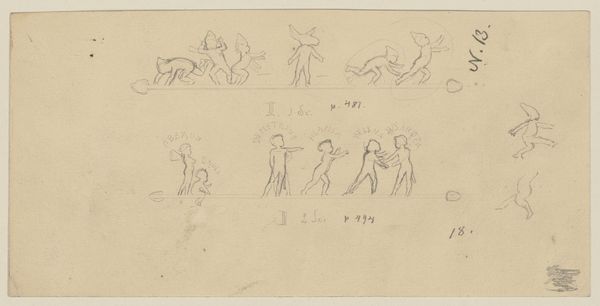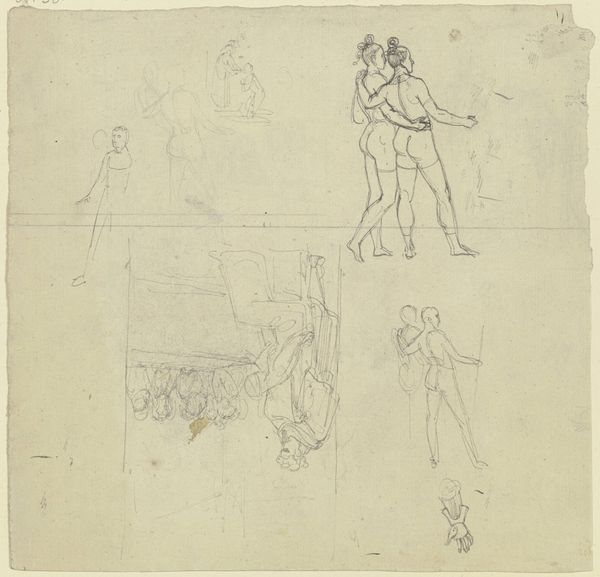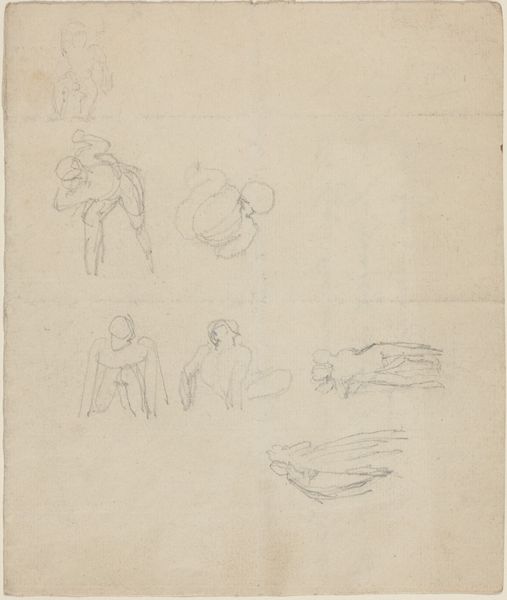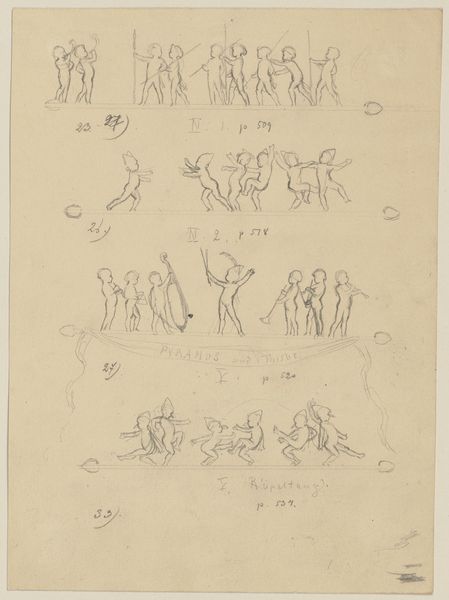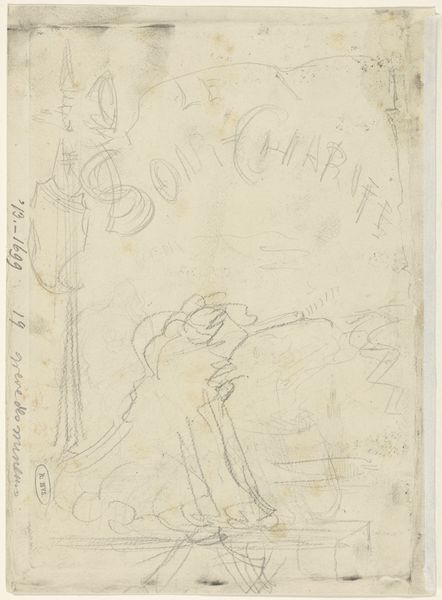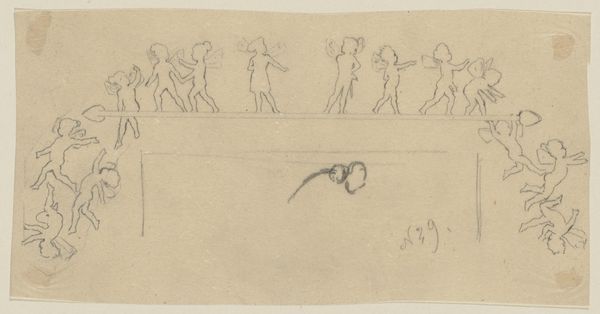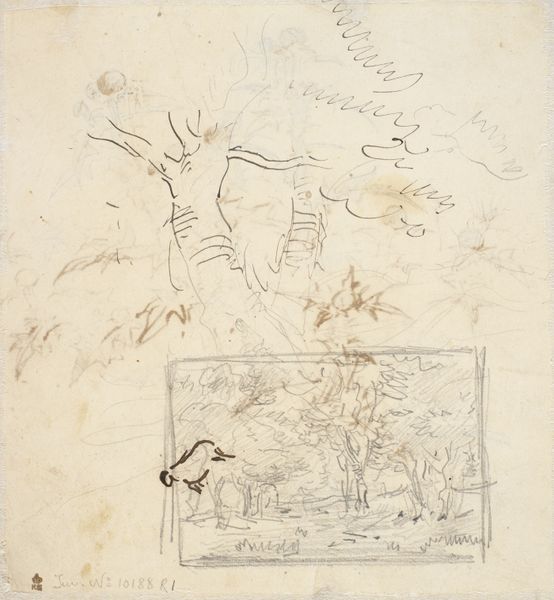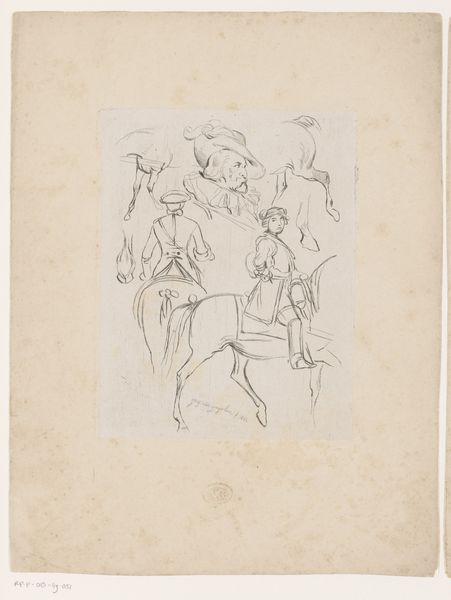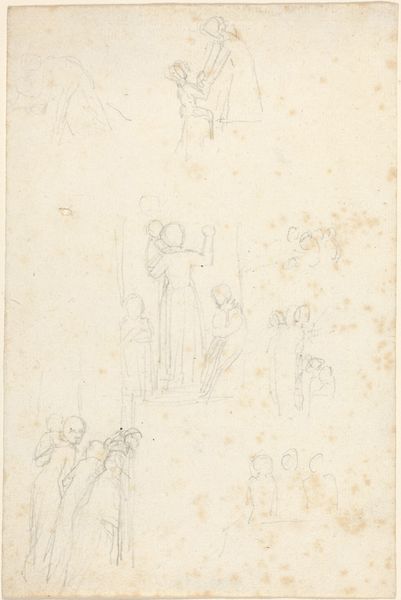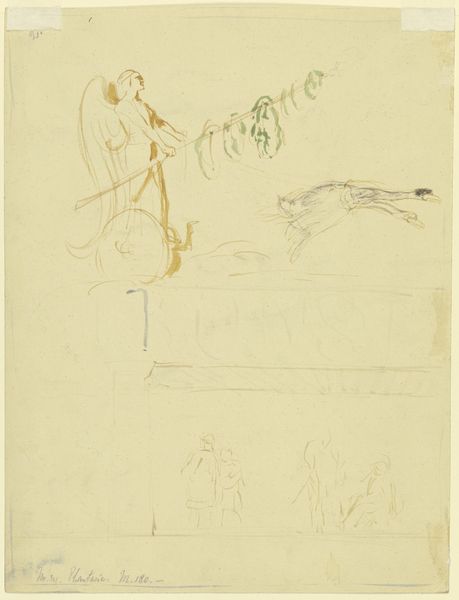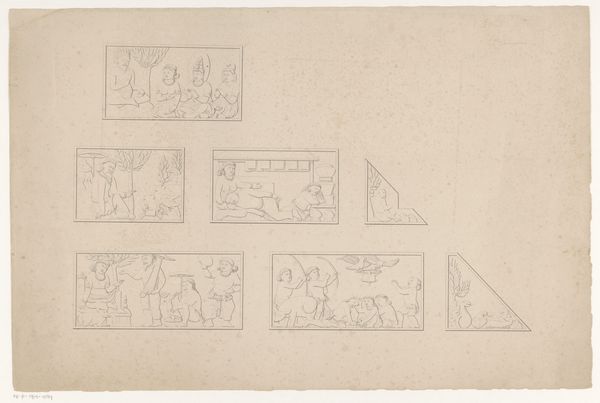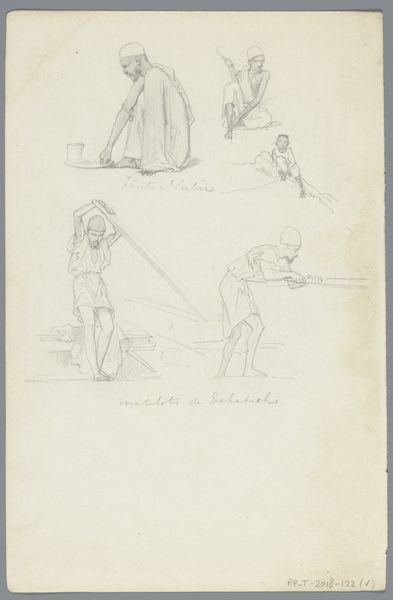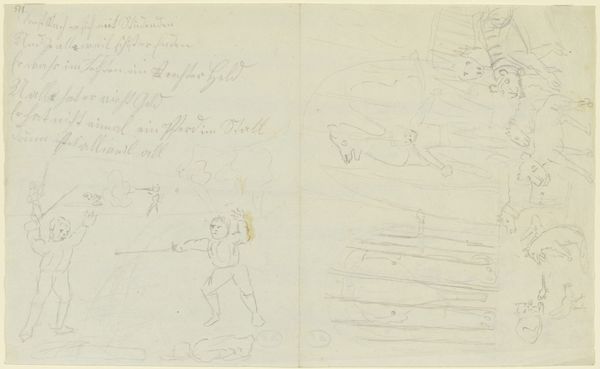
Studienblatt_ Figuren aus Shakespeares Sommernachtstraum, unten die Elfe mit Grashalm, auf einem Blattrankwerk gehend c. 1867 - 1868
0:00
0:00
Copyright: Public Domain
Curator: This fascinating sketch is entitled "Studienblatt: Figuren aus Shakespeares Sommernachtstraum" by Paul Konewka, created around 1867-1868. It's currently held at the Städel Museum. What are your initial impressions? Editor: My eye immediately goes to the visible means of production – the pencil on paper. There’s an immediacy to the line work that speaks to its status as a study. I also appreciate the delicate, almost ephemeral quality the artist achieved with such humble materials. Curator: Indeed. Konewka here is engaging with Shakespeare, adapting and interpreting a popular narrative through his own lens. "A Midsummer Night's Dream" explores themes of love, illusion, and the supernatural, themes that resonated deeply within Victorian society. We can trace the artist's own interpretation of societal constructions and values in his handling of these characters. Editor: And considering the industrial context of the late 19th century, where advancements in printing and mass media began democratizing access to art, this piece makes one consider what sort of societal role a personal drawing like this would serve for the artist or the public that might see it. How labor-intensive were Konewka's projects, and how would they have been displayed and consumed? Curator: That’s an interesting point. I think Konewka draws upon the power of visual representation, contributing to a larger cultural conversation, possibly critiquing social norms. This sheet allows us insight into the processes by which artistic ideas were generated and disseminated, specifically, and in general allows us a deeper exploration of the artistic value behind drawings such as this one. Editor: Right. Considering the social role this plays brings the raw artistic vision into better perspective, grounding Konewka’s art in the material conditions that shape the content it is ultimately about. And of course, thinking about what kind of paper, pencils, or other material constraints that faced the artist while making it can bring another rich avenue of historical questioning. Curator: So, viewing this “Studienblatt,” it serves not only as documentation but as a social mirror, too? Editor: I'd say so. By studying how he translated literature, his working processes, and the material choices behind it, we get to see how broader societal conditions inform artistic meaning. Curator: It is fascinating to me, understanding the socio-cultural roots and underpinnings of art and its intersectional possibilities through an individual’s interpretation of culture! Editor: For me, thinking about its creation shines a bright light on our cultural heritage—and our ongoing relationship to objects.
Comments
No comments
Be the first to comment and join the conversation on the ultimate creative platform.
